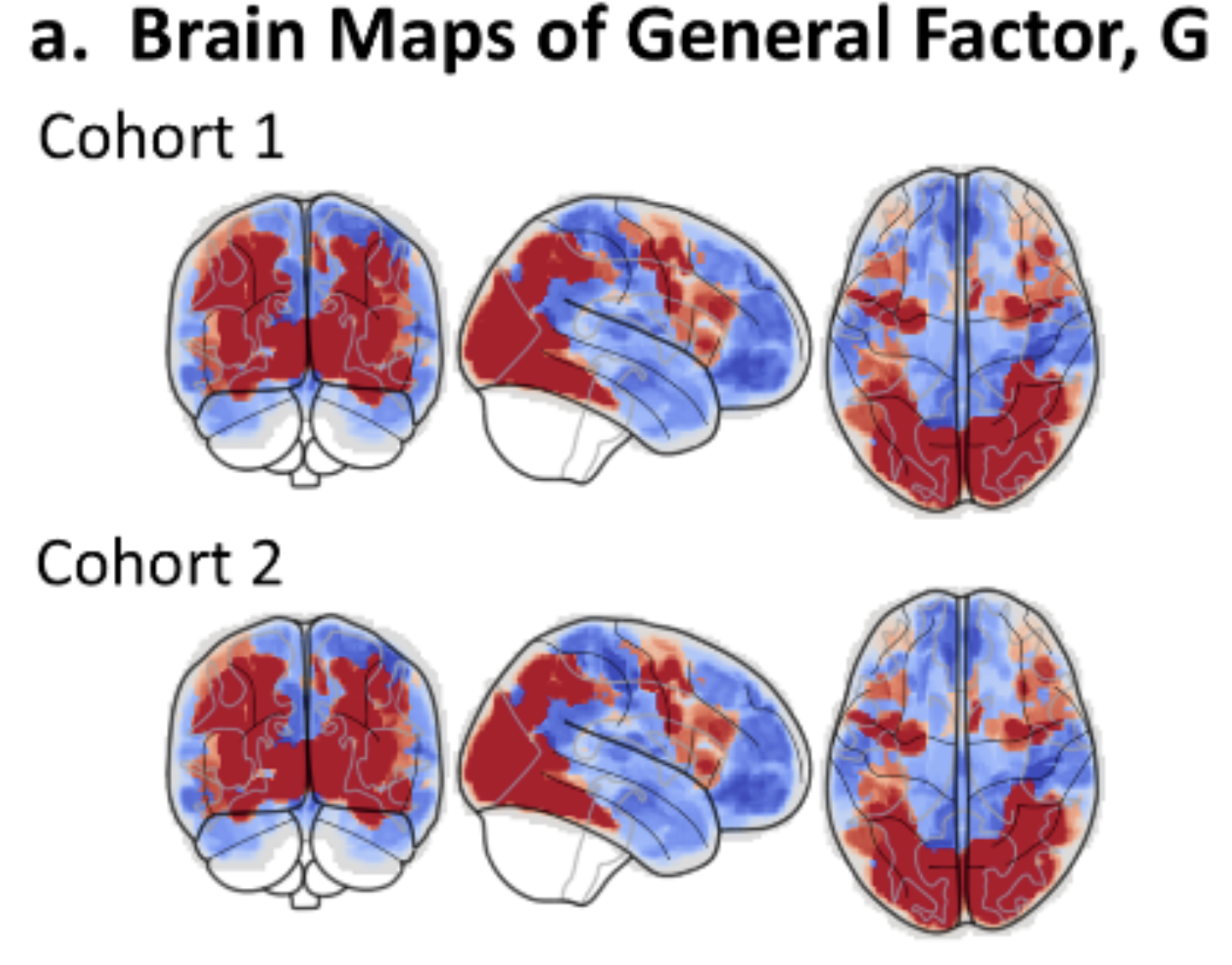Abstract
The Research Domain Criteria (RDoC) framework was introduced to guide psychiatric research using biologically grounded, dimensional constructs of mental function. However, its current hierarchical domain structure remains largely unvalidated against individual-level brain imaging data. Building on our prior group-level work showing that data-driven bifactor models outperform RDoC-based models, we applied a multi-stage validation framework to Human Connectome Project (HCP) task fMRI data to test whether individual-level, empirically derived models more accurately reflect the intrinsic organization and behavioral relevance of brain activity. Using confirmatory factor analysis in two independent cohorts, we found that individual-level, data-driven bifactor models consistently outperformed RDoC-based models across multiple fit indices in both training and validation sets. The general factor derived from these models revealed a reproducible macroscale gradient spanning visual-attentional to auditory-default mode networks, aligning with canonical resting-state gradients and supporting its interpretation as a domain-general axis of large-scale brain organization. Applying community detection to subject-specific factor representations revealed four spatial motifs whose centroids corresponded to interpretable brain systems and were robustly reproduced across cohorts. Similarity to these centroids predicted individual task performance in working memory and relational reasoning, as measured by both raw accuracy and latent performance factors. To further assess organizational validity, we applied Mapper-a topological data analysis method-to contrast maps, generating unsupervised graph representations of task-evoked brain activity. Mapper graphs annotated with data-driven centroids showed greater modularity than those annotated with RDoC domains, suggesting that the data-driven framework better captures the topological structure of individual functional brain states. Together, these findings demonstrate that individual-level, data-driven factor models provide a more accurate, interpretable, and behaviorally relevant account of brain organization than the current RDoC framework. By modeling inter-individual variability directly from neuroimaging data, this approach advances precision neuroscience and supports the empirical refinement of dimensional psychiatric frameworks such as RDoC.
